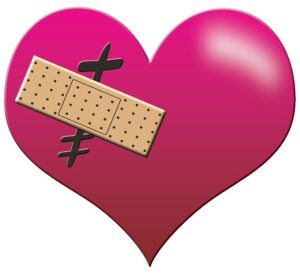If your business offers a tiered loyalty program with an annual cycle, beginning of the year may be a “heartbreaking” time for customers who failed to earn enough and was demoted from their previous premium tier status. Some argue that this is one of the downsides of a hierarchical loyalty program. What can you expect from these customers? What can you possibly do to earn back the love (or at least not lose the respect) of these demoted customers? I looked into research in this area to find some answers.
Negative Impact from Demotion
Just like anyone who have flown first class may feel quite miserable going back to the economy cabin, losing one’s premier tier status in a loyalty program is likely to have some damaging impact. This negative impact can have a more “rational” source and a more emotional source. On the rational side, getting demoted means the loss of important benefits such as higher point earning ratio and free perks. So objectively speaking, consumers lose something concrete when they get demoted. But that objective loss is only part of the story. The most important impact comes from the emotional effect of demotion. It is common for demoted customers to feel frustrated, disappointed, uncomfortable, or even angry.
Whether the demoted customer is driven by rational loss or by an emotional response, the ultimate outcome is higher dissatisfaction, lower loyalty toward the company, and a higher likelihood to switch brands. Not surprising? Here comes the kicker. Not only is demotion bad, the damage from demotion (e.g., silver to base tier) is much stronger than the positive effect from an equivalent promotion in the opposite direction (e.g., base tier to silver). In one study, researchers found that even after a demoted customer is restored to the lost premier tier at a later point, the overall loyalty level is still lower than before the customer was demoted. This is quite a serious issue. Unless most of your customers are on an upward trajectory in terms of how much they spend with your business, your gain from rewarding customers with premium tiers may never quite compensate for the loss you will suffer when consumers lose their premium tiers.
Who Suffer the Most?
The negative impact from demotion is not the same across customers though. Knowing which customers tend to respond more strongly can help you take proactive measures to avoid really negative consequences, e.g., keeping some customers in the old tier even if they have not quite spent that much last year. Below are some factors suggested by previous research, many of which should be fairly intuitive.
- Exclusive or polygamous loyalty? Exclusively loyal customers to your business will react more negatively.
- Relationship history? Consumers who have been with the business longer will react more negatively.
- Previous satisfaction with the business? Satisfaction with the business prior to demotion can cushion the negative impact of demotion.
- Involvement/engagement in the program? People who are more engaged and involved in the program will react more negatively.
- Costly to switch? A higher switching cost can soften the blow from demotion.
- Power distance? Consumers from higher power distance cultures (e.g., Malaysia, Mexico, China) will react more negatively to demotion.
- The lost tier? Really high-status program members (e.g., platinum) will be more upset than lower-status premium members (e.g., silver).
- Need for status? People who enjoy and appreciate special status and treatment will respond more negatively to demotion.
- Gender? Men are likely to respond more negatively than women.
- Who is in control? Consumers who believe themselves (rather than other people/things/situations) to be in control will respond less negatively.
- Who pays? Consumers who travel on their employer or someone else’s dime will be less upset about the demotion.
How Can You Mend a Broken Heart?

To answer this question, Professor Wagner and his colleagues compared things that businesses can do to make demoted customers feel better. Three types of intervention approaches were considered:
- It’s you, not me! Make the customer realize his/her action was the real cause of the demotion. This involved one of two things: either tell the customer the requirements for the premium tier (method 1), or provide them information about their declining spending (method 2).
- I didn’t have any choice! Shift the blame to factors uncontrollable by the company. This can be achieved, for example, by explaining to consumers the competitive pressure the company faces (method 3).
- I am sorry! Compensate for the harm done. The compensation can be either monetary (a gift certificate for future purchases with the company; method 4) or non-monetary (a simple apology; method 5).
Using an airline frequent flier program as the context, the researchers compared the loyalty intentions of demoted consumers receiving one of the interventions versus not receiving any communication. Out of the five methods, three were able to reduce the negative impact of demotion: offering premium tier requirements information (method 1), offering consumer spending information (method 2), and offering an apology (method 5). Unfortunately, none of these interventions was quite enough to fully restore the demoted customers’ loyalty compared with those people who were not demoted. In other words, while these three communication tactics are certainly helpful, don’t expect them to magically erase the trauma of demotion.
Proactive Measures to Prevent Demotion
It should be obvious by now that member demotion is not something you want for your program. Its negative consequences are far reaching and quite severe in some cases. How can you avoid it? One thing you can do is to nudge consumers toward their previous tier. I wrote before about how offering the right progress feedback to loyalty program members can motivate them to try harder. Based on my research, you can nudge individuals who are close to their target tier by highlighting how close they are (e.g., you are only one flight away from reaching the gold tier!). Throwing in some bonus points to help consumers reach their previous tier could also be helpful.
Besides nudging consumers to make sure they make it to their last year’s tier level, you should also consider the ironic effect of tier promotion. If a consumer is gradually climbing up the ladder through solid growth in his/her spending, you can reasonably expect that consumer to stay there. But if tier promotion is because of some sporadic increase in spending all of a sudden that is unlikely to continue in the long run, it would have been better off for the customer not to be promoted in the first place. So be careful when you issue bonus points in your program that may unintentionally propel some consumers to a new height they are not likely to sustain. Also if you see a sporadic increase in spending by a consumer that is unlikely to continue, get creative. For example, maybe you can try to buy out the consumer’s earned higher tier with immediate incentives with the tradeoff that the consumer stays where he/she was. This may involve some guesswork and may be complex to manage. But it may prove useful in the long run.
Finally, do you really need a tiered loyalty program? This is a loyalty program design decision you should not take lightly. The cost of wooing the cream of the crop may not be worthwhile in certain situations. So the decision is dependent on what you really want to achieve with your program. Tread carefully to avoid broken hearts!
